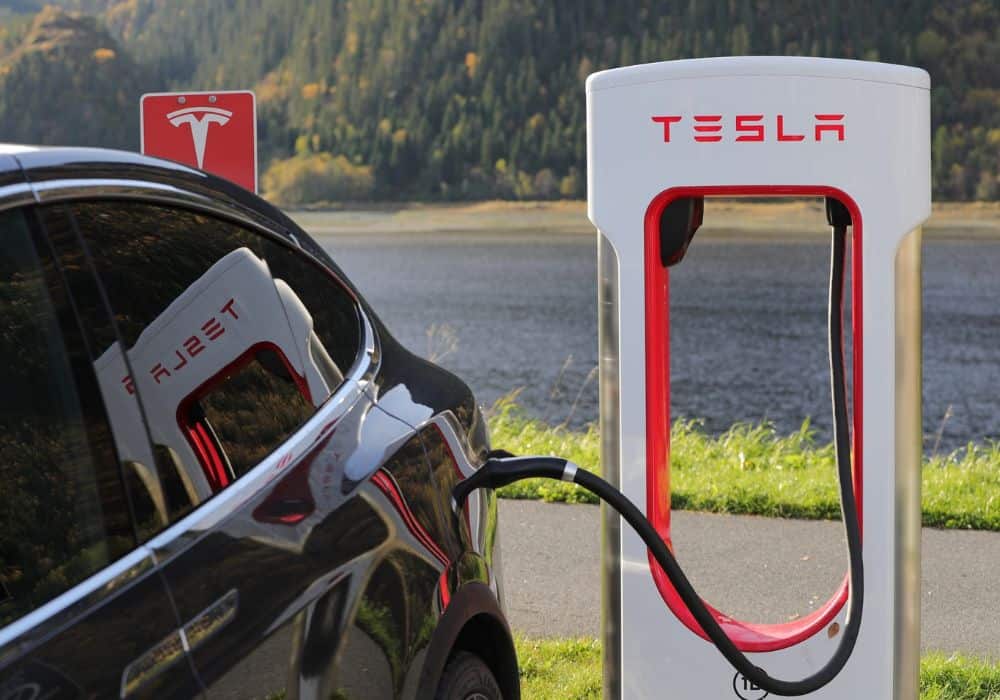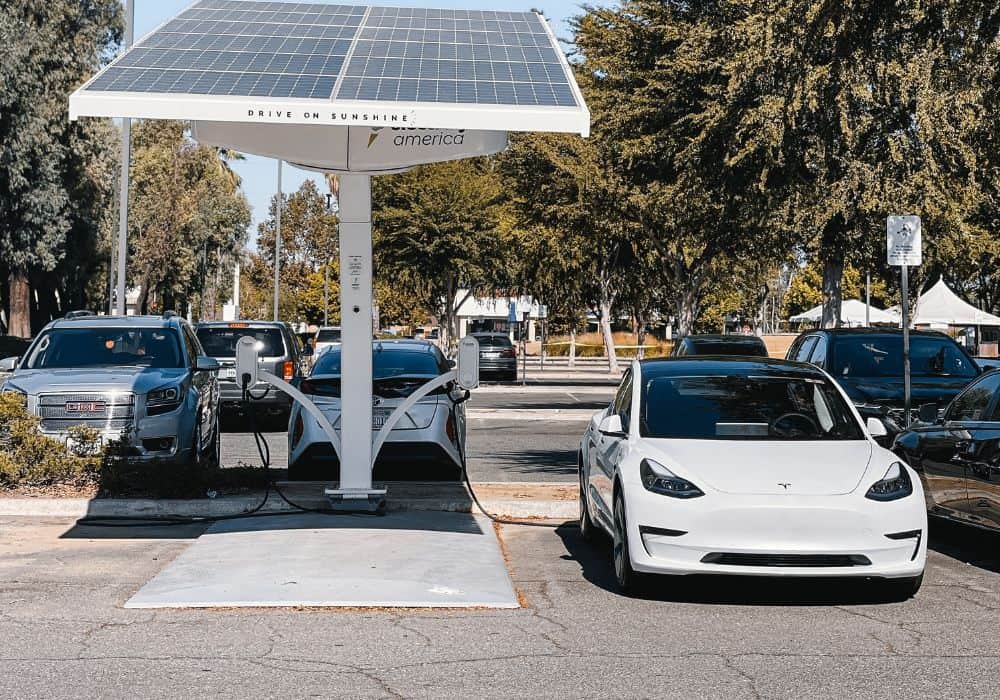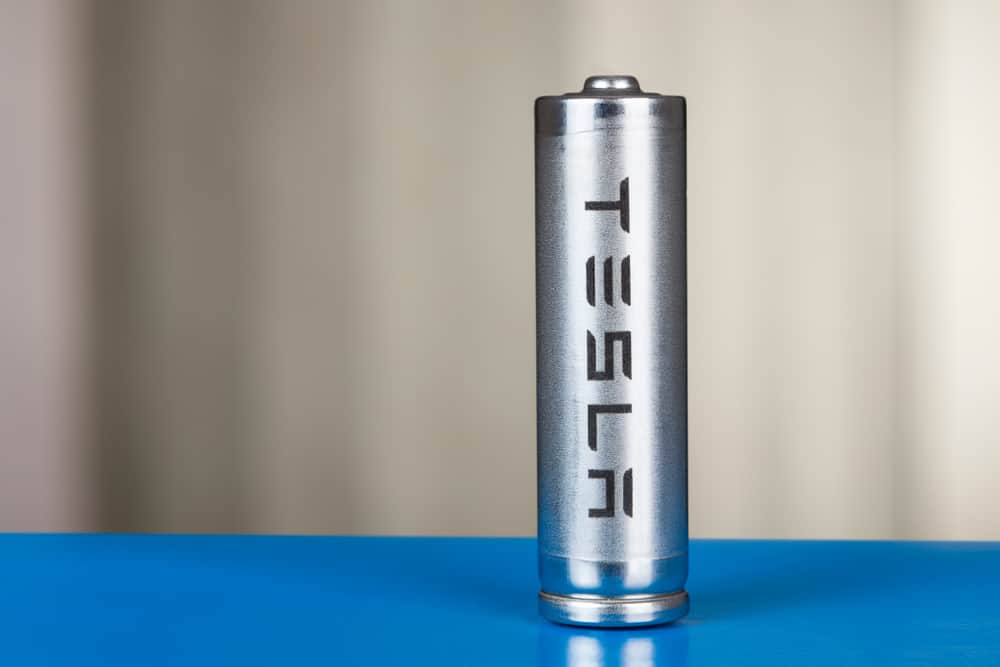If you have an ordinary car, the weight of its battery has probably never attracted your attention. After all, the weight of a regular 12-volt automobile battery is probably around 40 lbs (18 kg), which is not much.
As electric cars become increasingly popular, more people are starting to ask about their specs and qualities. When they do this research, they inevitably run into information about the weight of the battery.
Since Tesla is the most famous company in the electric car market, many people wonder how much a Tesla battery weighs. If you don’t know anything about this topic, you will probably be shocked when you hear the actual figures.
So fasten your seatbelts and join us on this heavy journey!
Table of Contents
How Much Does A Tesla Battery Weigh?

1. Tesla Model 3
Let’s start with the star of Tesla’s line-up of electric vehicles – Model 3.
Model 3 is not only Tesla’s but also the world’s most popular electric car and the first to be sold in more than a million units. In addition, from 2018 to 2020, this compact sedan was the world’s best-selling plug-in electric vehicle (PEV).
What does it owe its popularity to? Model 3 is decently priced in the category of mid-cost electric vehicles, which makes it attractive to a larger number of consumers.
But that’s not all. Efficiency, performance, acceleration, safety, futuristic styling, advanced technology and connectivity, and very long range are some of the qualities responsible for this car’s high sales numbers.
When it comes to its battery and specifications, it is important to emphasize that the Model 3 is produced in two versions, Standard Range and Long Range, so the batteries are, therefore, slightly different.
The weight of the Tesla Model 3 Long Range battery is 1,060 lbs (489 kg), and as far as the arrangement of battery packs is concerned, it is as follows: 4,416 cells are arranged in 96 groups, which means that there are 46 cells in each group.
You will not be surprised when we tell you that the Long Range model has a long range – it is 358 miles (576 km), which makes it one of the best electric cars on the market when it comes to this segment. In addition, the battery capacity is 82 kWh.
We said that the Model 3 has excellent acceleration from 0 to 60 mph and the Long Range version of this car proves exactly that with an acceleration of 3.1 seconds.
As for the arrangement of battery cells in the Standard Range version, there are 2976 cells in 96 groups. In each group, 31 cells are located, and thanks to them, this model has a range of 272 miles (438 km) after a single charge. Battery capacity is 60 kWh.
2. Tesla Model S

The Tesla Model S is the second electric vehicle the company has produced, the first being Tesla’s sports car, Roadster.
We said that the previous model was the most popular and best-selling Tesla model ever, but Tesla as a company would never be where it is if it weren’t for the initial success of the Model S.
This model was first produced in 2012, and although a lot of time has passed since then, the Model S still has a good market share.
When it first appeared, the high price was a point of contention for a lot of people, but when you look at what it brings in terms of performance, it’s no wonder why it brought and continues to bring success to the company.
The Model S’ Plaid version has an incredible acceleration from 0 to 60 mph in 1.99 seconds, is equipped with more than 1,000 horsepower, and can reach a top speed of 200 mph. How about that?
Since this model has been changed several times and produced in several variants, there are versions with a battery capacity of 60 kWh up to 100 kWh. Accordingly, the batteries have different weights. For example, the battery weight for a model with a capacity of 85 kWh is 1,200 lb (544 kg).
The weight of the Model S is 4,561 lbs (kg), which means that the battery is responsible for more than a quarter of the car’s total weight. This model carries 7,104 lithium-ion battery cells that are arranged in 16 modules. The modules are wired in series.
Today, this car can be bought in two versions, the normal version, and the Plaid version. The range of the normal version is 405 miles (651 km), while Plaid has a range of 396 miles (637 km).
3. Tesla Model X
Model X is Tesla’s SUV which uses falcon-wing doors for passenger access.
This model’s battery was available in four different lithium-ion battery packs that differed in battery capacity. Those four battery packs are 60, 75, 90, and 100 kWh.
However, Tesla has discontinued production of the first three mentioned packs, so nowadays, it is possible to buy only the 100 kWh one.
Of course, these four packages had different weights, which were: 60 kWh – 848 lbs (385 kg), 75 kWh – 1168 lbs (530 kg), 90 kWh – 1250 lbs (567 kg), and 100 kWh – 1377 lbs (625 kg).
We said this model is an SUV, which makes it different from other cars from the production line. It is the best in terms of storage room with 91 cubic feet, which is excellent for a luxury electric SUV, and that is how this model is marketed.
Another advantage compared to other models is the exceptional towing capacity of 5,000 lbs (2,268 kg). Like the previous model, it is available in two versions, Model X and Model X Plaid. Model X has a range of 348 miles (560 km), while Plaid X’s is 333 miles (535 km).
4. Tesla Model Y

If you are interested in something between Model 3 and X, Model Y is the right thing for you. This model shares 75% of its parts with the famous Model 3 but is also categorized as an SUV (although not as big as the Model X).
The whole car weighs 4,480 lbs (2,032 kg), and the battery 1,168 lbs (530 kg). It’s important to emphasize that this is the second version of the Model Y that packs 4,680 cells. The first version had 2170 cells.
Despite the fact that the second version has twice as many cells, it is 20 lbs lighter than the first version, which weighed 4,500 lbs.
Today, this model is available in three versions: Performance, with a range of 320 miles (514 km); Long Range AWD, whose range is 330 miles (533 km); and Rear Wheel Drive, with a range of 282 miles (455 km).
5. Tesla Roadster
Before Tesla became what it is today, its target group was lovers of (electric) sports cars. In 2008, they were called Tesla Motors and produced a sports car – Tesla Roadster. There are many interesting facts about this car, the first of which is that it was the first electric car that used lithium-ion battery packs.
The capacity of this package was 53 kWh, and Tesla named it Energy Storage System (ESS). It weighed 992 lb (450 kg), and the package configuration was called 11 S 9S 69P, which means the following: 11 sheets connected in series, each containing nine bricks that were also connected in series.
Finally, each brick had 69 cells, which were in parallel. All this in total means that the battery of the Tesla Roadster carries a total of 6831 cells.
One charge of this battery will take you 244 miles (393 km), and thanks to this fact, the Tesla Roadster was the first all-electric car that could travel more than 200 miles (320 km) with just one charge.
The second generation of this sports car is currently in production and should appear on the market in 2023. According to estimates, the battery will weigh 1,836 lb (833 kg), and thanks to it, owners of this car will be able to drive 620 miles (1,000 km) without recharging. Its capacity will be 200 kWh.
6. Tesla Cybertruck
If you thought the weights of the batteries we talked about so far were huge, wait until you hear what’s up with Cybertruck’s one. Of course, at the moment, it’s all estimates and guesses because this truck’s production is predicted to start at the end of 2023.
However, Elon Musk said the battery could weigh as much as the battery of the Ford F-150 truck. F-150 can be bought in a few versions whose batteries weigh between 4000 lbs (1,810 kg) to 5600 lbs (2,540 kg).
According to other estimates, a 250 kWh battery could weigh 3,100 lbs (1,400 kg). There will be batteries with different capacities, so expect ones with 100 kWh, 200 kWh, and 250 kWh. The latter’s range should be at least 500 miles (800 km.)
As you can see, not much is currently known, but what is known is that the battery will be enormous.
Conclusion
Now you know that the Tesla battery weighs around a quarter of the car’s total weight. Let’s mention the weights one more time, so they stick in our memory:
Model 3 – 1,060 lbs (489 kg)
Model S – 1,200 lb (544 kg)
Model X – 100 kWh – 1377 lbs (625 kg)
Model Y – 1,168 lbs (530 kg)
Roadster – first generation – 992 lbs (450 kg)
Roadster – the second generation – 1,836 lbs (833 kg)
Cybertruck – between 4,000 lbs (1,810 kg) and 5,600 lbs (2,540 kg).
If you have any questions, go to the comment section!
